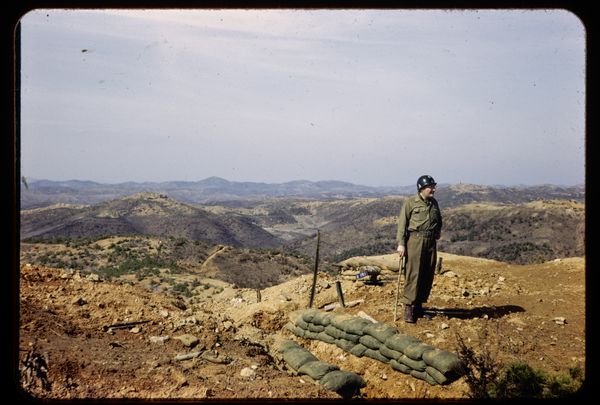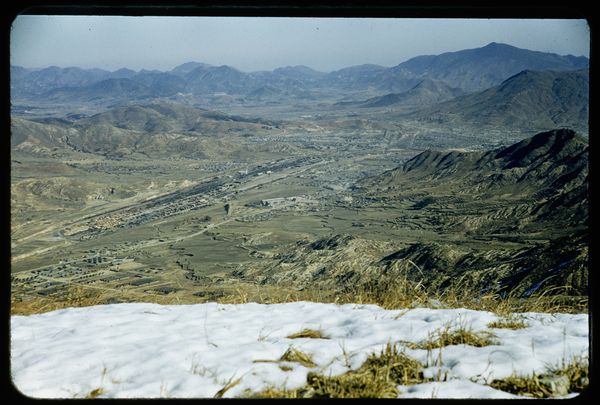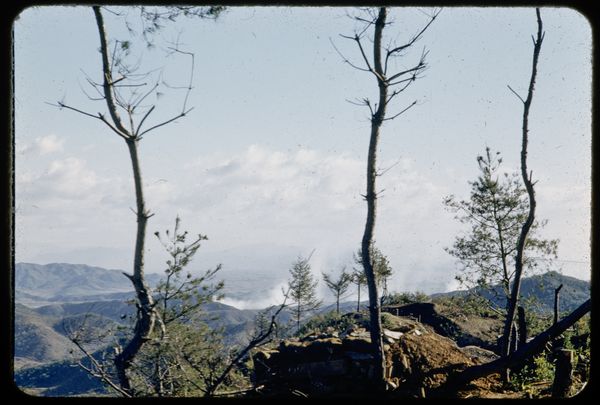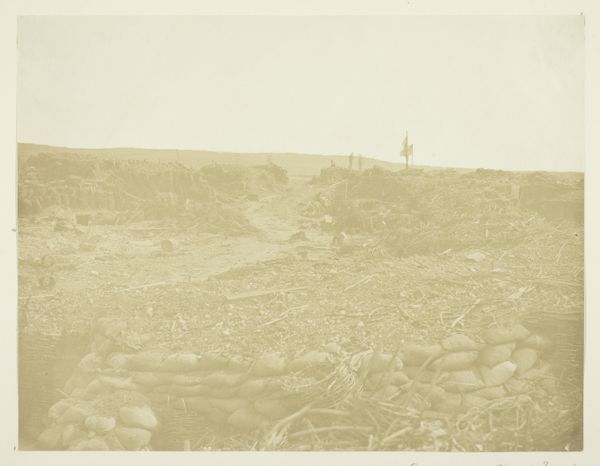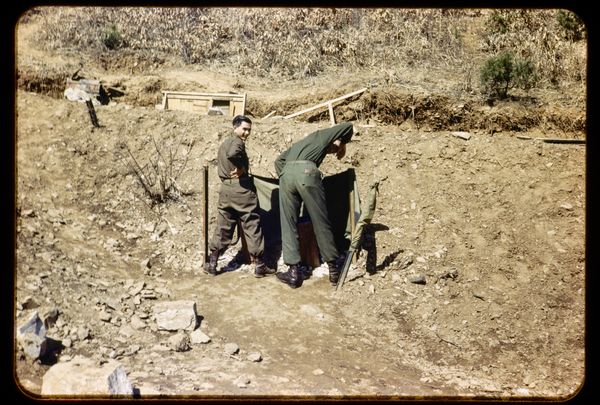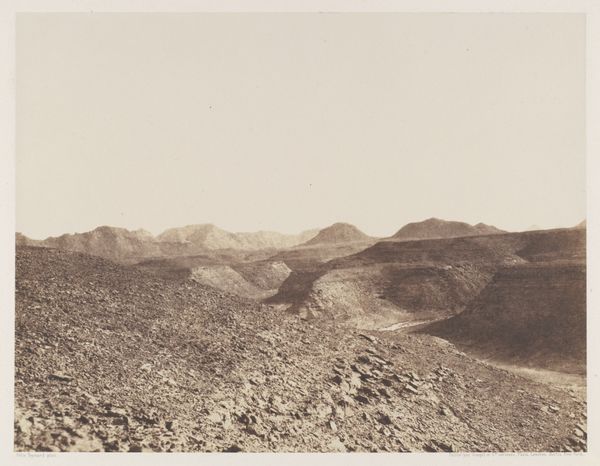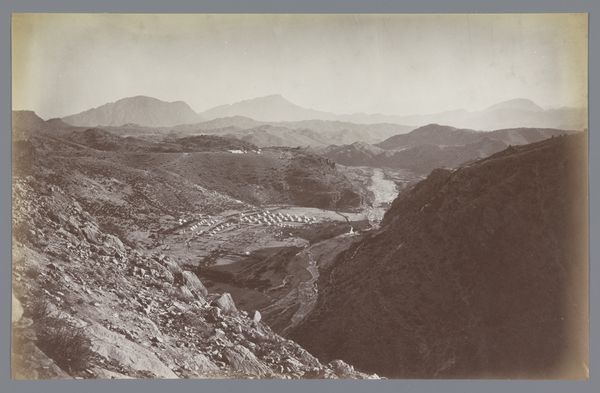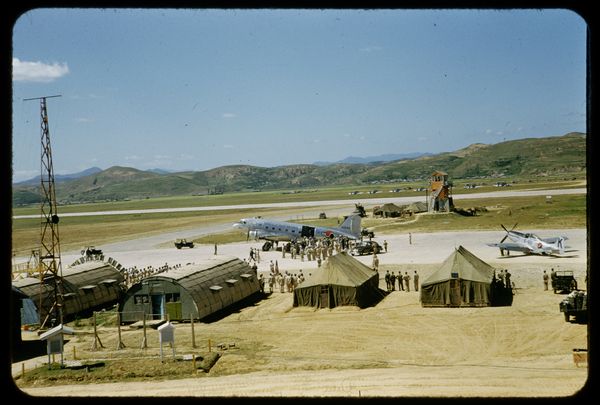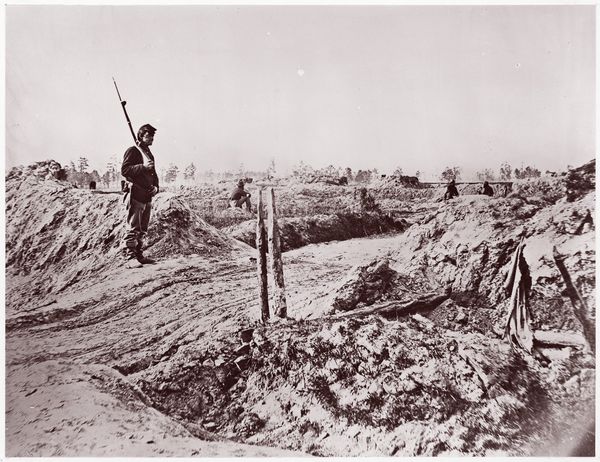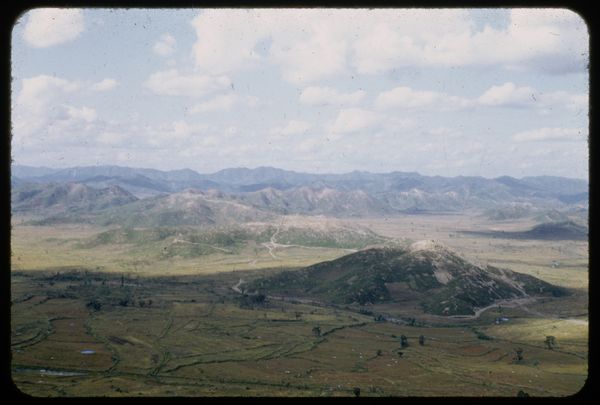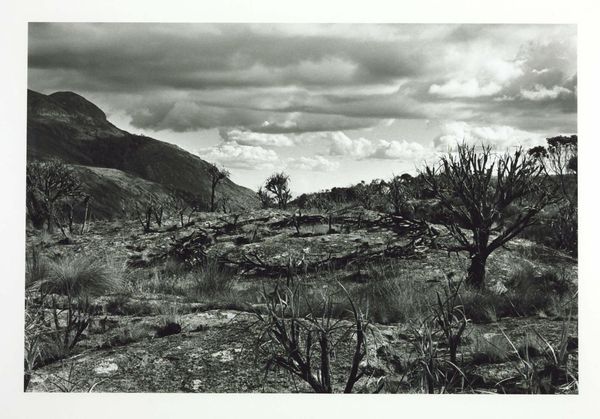
photography
#
landscape
#
nature
#
outdoor photography
#
photography
#
photojournalism
#
realism
Dimensions: height 5 cm, width 5 cm
Copyright: Rijks Museum: Open Domain
Curator: Right, let’s turn our attention to “Front in Korea,” a photograph taken by David Ketel in 1952. It's currently housed here at the Rijksmuseum. What strikes you first about this image? Editor: Desolation. Utter desolation. That arid, almost lunar landscape bleeding into the horizon, it’s breathtakingly bleak. There's this strange tension too— a kind of fragile, tense beauty. Curator: Exactly! It encapsulates that stark dichotomy. Ketel captures a frontline position; those sandbagged bunkers are clear. But the eye is drawn past them to the hills. There's this weird merging of immediate war and endless landscape. It avoids sentimentalism. Editor: Those sandbags… they’re such loaded symbols. A barrier, yes, obviously, against something. But also, like all barriers, they delineate space, define "us" and "them." Here, though, they seem so fragile, a pathetic attempt to stave off oblivion. What I wonder is what do they actually say about us humans. We keep repeating same symbols over again, like some script. Curator: True, the repeating symbolism of war. Ketel worked as a photojournalist, remember. He wasn’t necessarily seeking "art," but trying to document a reality. The symbolism isn’t forced; it rises from the very situation. Even the tones--the browns and khaki -- reinforce that feeling. Everything feels weary, almost giving in to being reclaimed. It’s realism in the face of a beautiful nature. Editor: Absolutely, a realism of the psychological, too. It’s in those unseen soldiers, huddled behind their precarious walls, trying to hold onto…what? Life? A strategic point? An ideology? I keep going back to that distant landscape. All that ancient, indifferent earth witnessing the futility below. It reduces human endeavor to a momentary blip. The photograph seems so timeless that the title suddenly brings the awareness to it being during the Korea War. It reminds me of that continuity between memory, and trauma, of repetition between the past and now. Curator: You're right. There is a bleak timelessness, even in what was intended to be raw, frontline journalism. The contrast becomes almost unbearably acute, doesn't it? That’s a striking insight, about timelessness and human endeavor being but a momentary blip, despite repeated images, it fades away in some sense and becomes part of the ground. Editor: I guess what resonates for me is that despite the documentary intention of Ketel's photography, it has opened new space to observe patterns and recurring meanings. Perhaps through time those new symbolic observations become clearer.
Comments
No comments
Be the first to comment and join the conversation on the ultimate creative platform.
